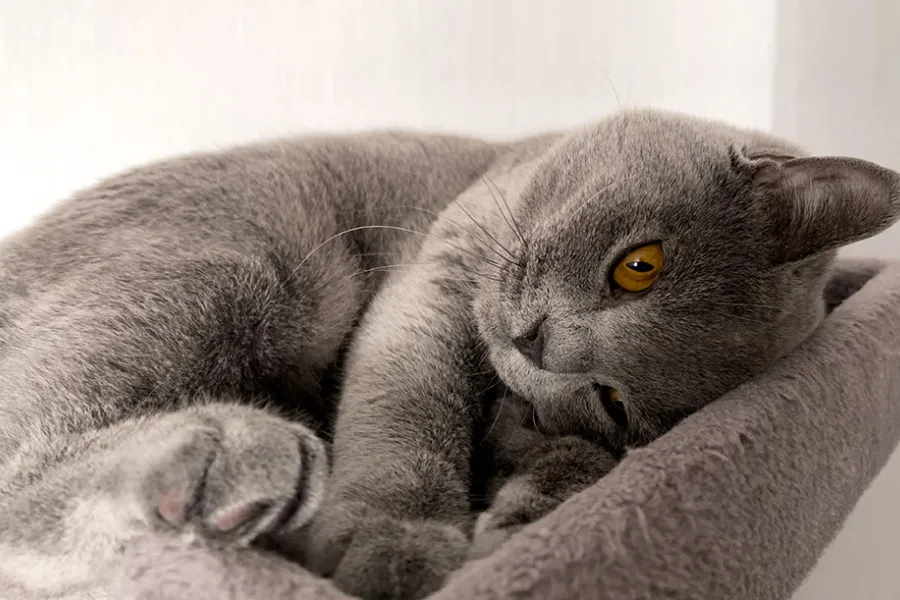PATHOLOGIES WE TREAT
Alopecia

Introduction
Alopecia refers to partial or complete hair loss in one or more areas of an animal’s body. While it can be a symptom of various dermatological conditions, it is commonly associated with diseases such as atopic dermatitis, where intense itching leads to excessive scratching and subsequent hair loss, or endocrine disorders like hypothyroidism. This article discusses the causes, symptoms, and treatments for alopecia in dogs and cats, along with tips for maintaining a healthy coat.
Causes
The causes of alopecia in pets are diverse and may include:
- Parasites: Fleas, mites, and other external parasites are among the most common causes. Persistent itching can lead to self-inflicted hair loss.
- Infections: Fungal infections (e.g., ringworm) and bacterial infections can result in localized hair loss.
- Allergies: Food, environmental, or contact allergies can irritate the skin, causing excessive scratching and licking that leads to alopecia.
- Hormonal imbalances: Disorders like hypothyroidism or Cushing’s syndrome disrupt hair growth and can cause localized or generalized hair loss.
- Stress: Stress and anxiety, especially in cats, can result in compulsive grooming and hair loss.
- Genetics: Certain breeds are predisposed to alopecia, particularly in specific areas of the body.
Symptoms
In addition to visible hair loss, alopecia may present with other symptoms that help identify the underlying cause:
- Red or inflamed skin in affected areas.
- Constant scratching or licking.
- Scales, crusts, or dandruff on exposed skin.
- Unpleasant odor if secondary infections are present.
- Behavioral changes, such as restlessness or compulsive grooming.
Diagnosis
Diagnosing alopecia begins with a physical examination and review of the pet’s medical history. Additional diagnostic tests may include:
- Skin cultures to identify fungal or bacterial infections.
- Skin scrapings to detect parasites.
- Blood tests to assess hormone levels and allergies.
- Skin biopsies for more complex cases.
Treatment
Treatment depends on the underlying cause of alopecia:
- Topical therapies: Specialized shampoos, soothing lotions, and fatty acid supplements improve skin and coat health. Products like Skinnia Calm are ideal for alleviating redness and discomfort in affected areas.
- Environmental enrichment and play routines: Address stress-related alopecia by reducing anxiety in pets.
- Veterinary care: More serious cases may require antifungal, antibiotic, or hormonal treatments as prescribed by a veterinarian.
Prevention
To minimize the risk of alopecia, prioritize your pet’s overall hygiene and health:
- Use topical products to hydrate and protect the skin.
- Feed a balanced diet rich in omega-3 and omega-6 fatty acids to improve the skin barrier and promote hair regeneration.
- Regularly inspect and clean your pet’s skin and coat to detect issues early.
Heinrich, N.A., Eisenschenk, M., Harvey, R.G., & Nuttall, T. (2019). Skin Diseases of the Dog and Cat (3rd ed.). CRC Press.
Paradis, M. (2012). An approach to symmetrical alopecia in the dog. In BSAVA Manual of Canine and Feline Dermatology (pp. 91-102). BSAVA Library.
Hill, P. (2005). Clinical approach to alopecia in dogs-will the hair grow back?.
Favrot, C. (2011). Alopecia in dogs.
Boeta, A. M. R. (2020). Diagnosis of alopecia in dogs and cats. Grupo Asís Biomedia SL.

Bioadhesive transparent gel indicated to moisturise, protect and soothe the dry skin of small animals.